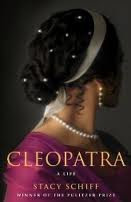They Were What They Wore
When Americans see someone riding in the back of a Rolls Royce, we can usually make some accurate assumptions about that person’s social status. When Europeans see groups of tourists dressed in bright-colored ski outfits carrying on noisily in subways, they are likely to (accurately) label such people as “noisy Americans.” And when we see an infant in the U.S. dressed in pink sporting a hair bow, we can be pretty sure that baby is a girl. Also, when we want to know someone’s marital status, we can subtly scope out the fourth finger, left hand for the essential information.
In the same way—only much more so—when the average Roman woman in antiquity stepped outside her door, her apparel and hairstyle gave off major visual clues signaling to all who saw her about her rank (citizen, freeborn, slave), her marital status, in some cases her age, and even her moral status.
In a well researched monograph, Dress and the Roman Woman: Self-Presentation and Society (2008), Kelly Olson (University of Western Ontario) decodes these symbols. And though her 192-page work includes only about 116 pages of text (the rest consisting of generous notes, a bibliography, and an index), she packs in her thin book the fullest and most recent information in English available on the subject of Roman women’s apparel.
Until I read it, I didn’t know that yellow was the Roman woman’s “pink.” And when I’ve pictured togas, I’ve always assumed they were white, probably because of TV depictions of frat parties where guys used sheets. But Romans loved color.
In the same way, when I see sculptures from antiquity, I don’t usually imagine them as painted in a kaleidoscope of red, yellow, violet, purple, brown, blue, green... But I should. And that goes for temples, too. So if I write a story about an ancient Roman arriving in Washington D.C. via time travel, he or she needs to immediately express surprise at the blandness of our monuments! The green Statue of Liberty, though unintentionally, gets it right. Oh, and the wedding veils were saffron.
Olson’s book also explores aspects of a Roman women’s adornment besides her apparel. These women used cosmetics, but lips weren’t the big deal. Skin was the thing. A beautiful complexion free of pockmarks or wrinkles was difficult to maintain in the ancient world. Think of what poor sanitation and diet, not to mention harsh skin treatments and disease, could do to devastate the face. Lighter skin was more highly valued, perhaps because wealthier people spent less time in the sun (my conjecture, not hers). So women used white lead, which could ravage the complexion. With that in mind, I read with new insight the eschatological description of Christ’s Bride (the church) in Ephesians 5: “…without spot or wrinkle or any other blemish…” I’m thinking Paul probably had the face in mind, not the wedding dress—despite the fact that some have translated “spot” as “stain.”
Olson covers the life cycle from young girl, to matron and widow as well as bride, slave and prostitute. Apparently putting away “childish things,” in addition to offering toys included laying aside the outfit that actually marked one as a child.
Also included in Olson's work are shoes, jewelry, and hairstyles. And because of its broad scope, some of what’s laid out in this book sheds light on the 1 Corinthians 11 references to head coverings. If a covered head was the Roman woman’s equivalent to a big, fat wedding ring, going outside with a bare head communicated “I’m available,” to the dishonor of both wife and husband.
Modesty was a key Roman virtue. But the word “modesty” encompassed more than avoiding provocative dress. It included avoiding visual displays of power. Two such displays included braids and pearls. Whereas braids for us often mean simplicity, to have one’s hair braided back then—and their braids were elaborate—required a major investment of daily time and money. Thus Roman authors often chided women for too much grooming.
And pearls, not diamonds, were the most expensive jewels. (I read in Stacy Schiff’s new book, Cleopatra, that Caesar

once bought his mistress a pearl that cost more than what 1,200 professional soldiers earned in a year.) Our costume jewelry and cubic zirconia make it difficult to imagine what a strong social statement a woman would make if she emerged dripping in a dowry’s worth of “frosting” in public. But suffice it to say, such an act would scream “pretentious.”
That observation sheds light on 1 Tim 2:9, where Paul writes, “I also want women to dress modestly, with decency and propriety, not with braided hair or gold or pearls or expensive clothes…” Barbara Bush wearing pearls sent a much different message than did the ancient Roman woman. (Notice what Cleopatra has in her hair, dangling from her ears, circling her neck on the book cover. Pearls and purple said "massive wealth.")
The biblical connections are mine, not hers--it's not a religious text. And one thing the book does not cover is how dress might have differed in the provinces (of course I’m thinking of Ephesus vs. the city of Rome here). Nevertheless,
Dress and the Roman Woman is a terrific study that provides much interesting information on apparel, adornment, and representation. This work is not cheap—it cost me nearly thirty bucks. But it's a great addition to the library for anyone wanting to understand the Roman woman and her “dress as representation”--not to mention references to wives and women in the New Testament. Five stars.

